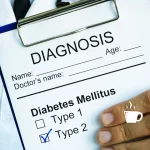Physical Address
304 North Cardinal St.
Dorchester Center, MA 02124
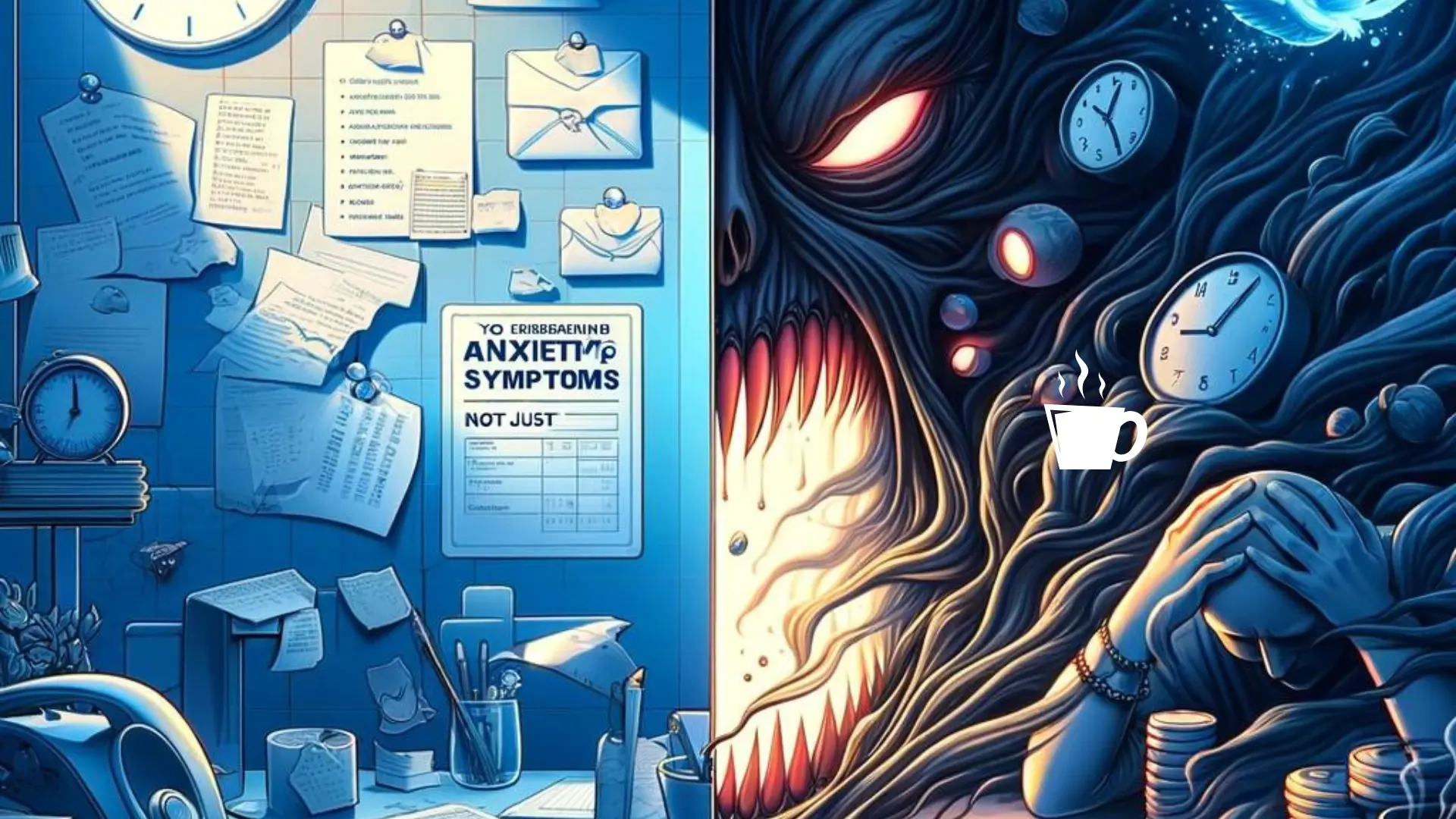
“Anxiety symptoms can often masquerade as ordinary stress, making them hard to recognize. Identifying these signs is crucial for managing and treating anxiety effectively.”
In today’s fast-paced world, feeling stressed is often considered normal, but when does usual stress cross the line into anxiety? Understanding the distinction is crucial, as anxiety can have a profound impact on your life. This article delves into ten signs indicating your experiences might be symptoms of anxiety, not just everyday stress.
Anxiety is a common condition, affecting millions worldwide. Yet, many of us struggle to differentiate between the sensations of being stressed and the more serious symptoms of anxiety. Recognizing these signs is the first step towards seeking help and improving your quality of life.
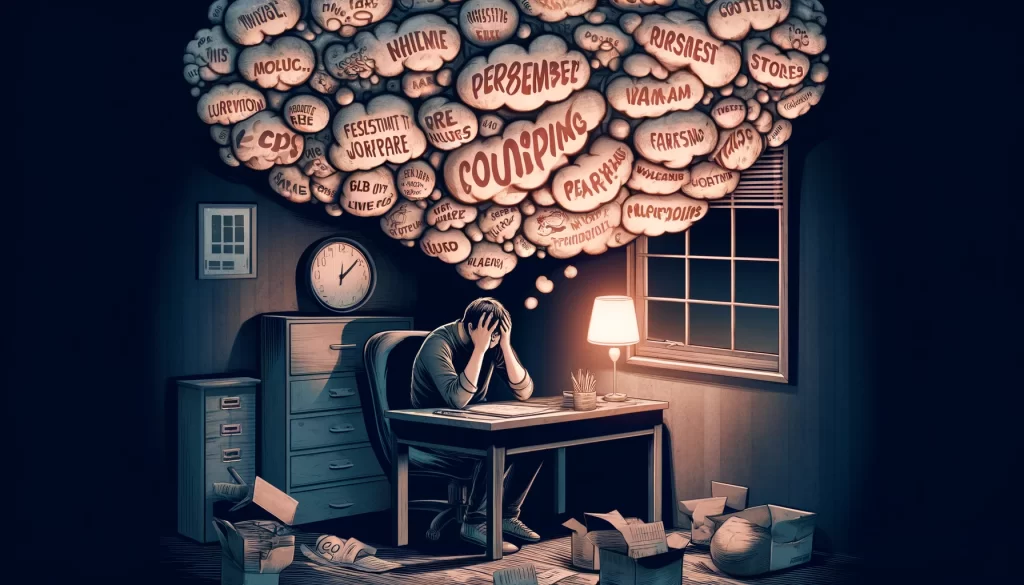
Persistent worrying is a hallmark symptom of anxiety, where an individual finds themselves engulfed by excessive concerns about everyday decisions or events. This type of worrying goes beyond the normal apprehension one might feel before a significant event; it is disproportionate to the actual challenge or situation at hand. For example, the thought of making a minor mistake at work might spiral into fears of job loss, financial ruin, or even broader personal failure. This relentless worrying can consume hours each day, making it difficult to concentrate, relax, or even enjoy moments of peace.
What sets this apart from standard stress is its persistence and the inability to control or dismiss the worry. Stress typically diminishes after the situation is resolved, but anxiety-laden worrying lingers, creating a cycle of distress that interferes with daily functioning. This ongoing worry can lead to sleep disturbances, tension, and a significant impact on one’s quality of life.
Recognizing this symptom is crucial, as it’s often the first sign that your stress may have evolved into something more profound. Understanding that anxiety manifests through such persistent concerns can encourage individuals to seek the appropriate support and strategies to manage their symptoms effectively.

Restlessness in the context of anxiety is a pervasive feeling of being unable to settle or calm down, which can significantly disrupt daily life. This symptom goes beyond mere physical agitation; it encompasses a profound sense of unease that affects both the mind and body. Individuals experiencing this form of restlessness often describe it as feeling “on edge” or having an overwhelming urge to move or do something, even when there’s no apparent reason for this feeling. It’s like an internal motor that won’t turn off, leaving the person feeling perpetually unsettled.
This constant state of restlessness can interfere with the ability to focus on tasks, relax, or even engage in leisure activities. It’s not uncommon for those affected to pace, fidget, or find themselves compulsively engaging in activities just to try to alleviate the discomfort. Unlike the occasional nervous energy many people experience, anxiety-driven restlessness is persistent and can be exhausting, leading to additional symptoms such as irritability or difficulty sleeping.
Recognizing restlessness as a symptom of anxiety is important because it highlights the physical manifestations of the condition. It’s a signal that the body is constantly in a heightened state of alert, often in anticipation of undefined threats, showcasing how anxiety can extend beyond worry to affect physical well-being.

Trouble with concentration is a significant symptom of anxiety that often goes unnoticed or is attributed to other causes. When anxiety takes hold, the mind becomes inundated with worries and fears, leaving little room for other thoughts. This flood of anxious thoughts can make it exceedingly difficult to focus on tasks at hand, whether it’s work, studies, or even simple daily activities. Individuals may find themselves reading the same sentence over and over without comprehension or starting tasks only to forget what they were doing moments later.
This symptom is not just about being easily distracted; it’s a profound inability to maintain focus due to the constant background noise of anxiety. The mind is so preoccupied with hypothetical scenarios and concerns that it becomes challenging to channel thoughts productively. For someone experiencing anxiety, this can lead to a vicious cycle where the inability to concentrate exacerbates worries about performance and competence, thereby increasing anxiety and further impairing concentration.
Acknowledging trouble with concentration as a symptom of anxiety is crucial. It highlights the pervasive impact of anxiety on cognitive functions and underscores the importance of addressing anxiety not only for emotional well-being but also for cognitive performance. Understanding this connection can motivate individuals to seek strategies and support to manage anxiety and improve their focus and productivity.
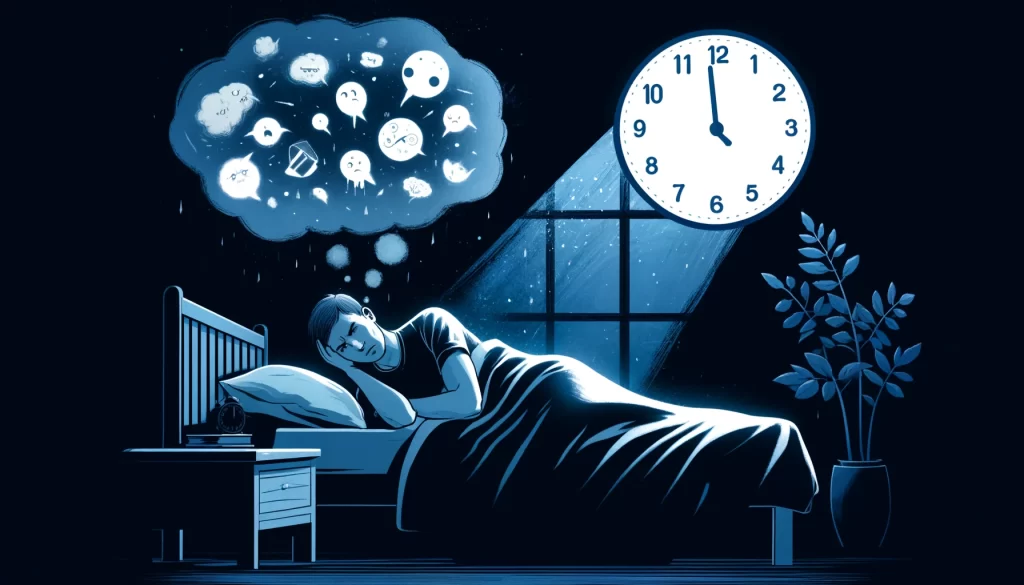
Sleep disturbances are a common and debilitating symptom of anxiety, affecting the ability to fall asleep, stay asleep, or enjoy restorative sleep. People with anxiety often find themselves lying awake, unable to quiet their minds from the relentless stream of worries and fears. These nighttime anxieties can range from specific concerns about the day’s events to existential worries about the future. The bed, intended to be a place of rest and recovery, instead becomes a battleground for racing thoughts.
Moreover, the relationship between anxiety and sleep is bidirectional; not only can anxiety lead to sleep disturbances, but lack of sleep can also exacerbate feelings of anxiety. This creates a vicious cycle that can severely impact physical health, cognitive abilities, and overall quality of life. Individuals may experience increased irritability, difficulty concentrating, and a decrease in energy levels, all of which can further feed into the cycle of anxiety.
Recognizing and addressing sleep disturbances as a symptom of anxiety is crucial. Effective management can break the cycle, improving both sleep quality and anxiety levels. Strategies may include establishing a relaxing bedtime routine, limiting screen time before bed, and practicing mindfulness or relaxation techniques. In some cases, professional help may be necessary to address underlying anxiety and restore healthy sleep patterns.
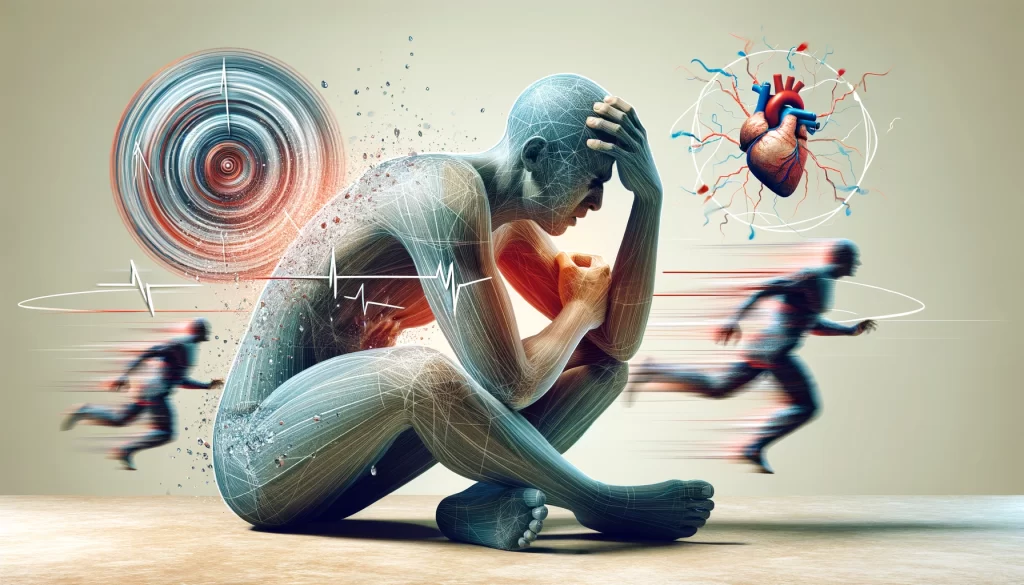
Anxiety is often considered a condition of the mind, but it manifests strongly in the body, producing a range of physical symptoms that can be surprising to those who associate anxiety solely with worry or fear. These physical manifestations include a rapid heartbeat, excessive sweating, trembling, dizziness, and gastrointestinal issues such as nausea or chronic indigestion. These symptoms are not only uncomfortable but can also be alarming, leading individuals to seek medical attention for what they fear may be a serious physical health issue.
The physical symptoms of anxiety are a direct result of the body’s fight-or-flight response, a primitive mechanism designed to protect us from danger. In the case of anxiety, this response is activated not by a real threat but by the perception of danger, often in the form of excessive worries or fears. The heart races to pump more blood to muscles, sweating increases to cool the body, and digestion may be disrupted as the body prepares to respond to a threat.
Understanding that these physical symptoms are linked to anxiety is crucial for individuals experiencing them. It can alleviate fears of more serious health issues and direct attention to appropriate anxiety management strategies. Techniques such as deep breathing, relaxation exercises, and physical activity can help mitigate these physical symptoms by calming the body’s stress response and reducing anxiety levels.

Avoidance behavior is a coping mechanism frequently observed in individuals suffering from anxiety. This behavior involves deliberately staying away from certain situations, activities, or environments that trigger anxiety or discomfort. While avoidance may provide short-term relief from anxiety, it can have long-term detrimental effects on a person’s quality of life and social interactions. Individuals may start to skip social gatherings, procrastinate on essential tasks, or avoid specific places, severely limiting their experiences and opportunities for growth.
The psychology behind avoidance behavior is rooted in the desire to escape unpleasant feelings associated with anxiety. For example, someone with social anxiety might avoid attending parties or public speaking to prevent the intense fear and physiological symptoms these situations provoke. However, this avoidance reinforces the anxiety by never allowing the individual to confront and adapt to the feared situation, potentially leading to an increased sense of helplessness and dependency on avoidance strategies.
Recognizing avoidance behavior as a symptom of anxiety is vital because it offers an opportunity for intervention. By gradually facing feared situations in a controlled and supportive manner, individuals can weaken the association between the situation and the anxious response. This approach, known as exposure therapy, is a powerful tool in overcoming anxiety and expanding one’s comfort zone, leading to improved confidence and life satisfaction.

Irritability is an often overlooked but significant symptom of anxiety. This heightened state of agitation is not just about being easily annoyed; it’s a pervasive sense of frustration that can arise from the constant stress and nervous tension associated with anxiety. People experiencing anxiety may find themselves having a shorter fuse than usual, getting irritated by things that would typically be brushed off. This can include minor inconveniences, interruptions, or simply the behavior of others.
The root of this irritability lies in the brain’s response to perceived threats. Anxiety puts the nervous system on high alert, causing an individual to react more intensely to stimuli. This heightened state can make it difficult to manage emotions, leading to a quicker temper and responses that are out of proportion to the situation. Moreover, the chronic nature of anxiety means that this state of heightened alertness and sensitivity to potential threats is sustained over long periods, contributing to a constant sense of unease and irritability.
Recognizing irritability as a symptom of anxiety is important because it affects not only the individual but also their interactions with others. It can strain relationships and exacerbate feelings of isolation or misunderstanding. Addressing this symptom through stress management techniques, mindfulness, and, if necessary, professional help, can improve personal well-being and interpersonal dynamics.

Uncontrollable feelings of fear, often manifesting as sudden and intense episodes known as panic attacks, are stark indicators of anxiety. These episodes can strike without warning, overwhelming individuals with a sense of dread so intense that it can mimic the symptoms of a heart attack. During a panic attack, one might experience rapid heartbeat, sweating, shaking, shortness of breath, chest pain, and even a fear of impending doom or death. These symptoms are not only physically distressing but also mentally taxing, as the fear of experiencing another attack can lead to persistent worry and avoidance of situations that might trigger an episode.
The root of these uncontrollable feelings lies in the body’s fight-or-flight response, which is activated at inappropriate times in those with anxiety. Instead of responding to real, immediate threats, the body reacts to perceived dangers, often the product of anxious thoughts or external stresses that are not truly life-threatening.
Acknowledging these intense feelings of fear as a component of anxiety is crucial for understanding and managing the condition. Recognizing the signs of a panic attack and learning coping strategies, such as deep breathing techniques, mindfulness, and grounding exercises, can help regain control during these overwhelming moments. For many, professional guidance and therapy are essential in managing panic attacks and reducing their frequency and intensity, leading to a significant improvement in quality of life.
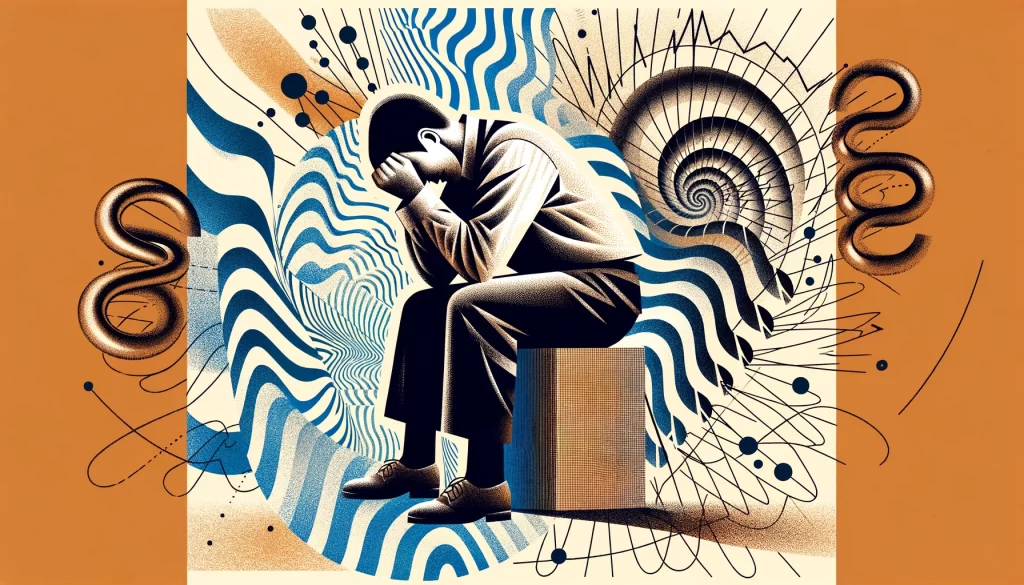
Muscle tension is a common but frequently overlooked symptom of anxiety. This physical manifestation involves the involuntary tensing of muscles throughout the body, often without the individual’s conscious awareness. Many people with anxiety may find themselves clenching their jaw, tightening their shoulders, or balling their fists as part of their body’s natural response to stress. This constant state of tension not only contributes to the overall feeling of unease associated with anxiety but can also lead to chronic pain, headaches, and fatigue, further impacting an individual’s quality of life.
The mechanism behind muscle tension in anxiety is linked to the body’s fight-or-flight response, designed to prepare the body to face or escape perceived threats. In the context of anxiety, where the threat is psychological rather than physical, this response results in sustained muscle readiness, leading to tension. Unfortunately, this can create a feedback loop where muscle pain and discomfort exacerbate feelings of anxiety, perpetuating the cycle.
Addressing muscle tension requires a multi-faceted approach. Techniques such as regular physical activity, relaxation exercises, deep breathing, and mindfulness can help release muscle tension. For many, recognizing the connection between muscle tension and anxiety is the first step towards managing this symptom, highlighting the importance of holistic approaches in treating anxiety that consider both the mind and the body.
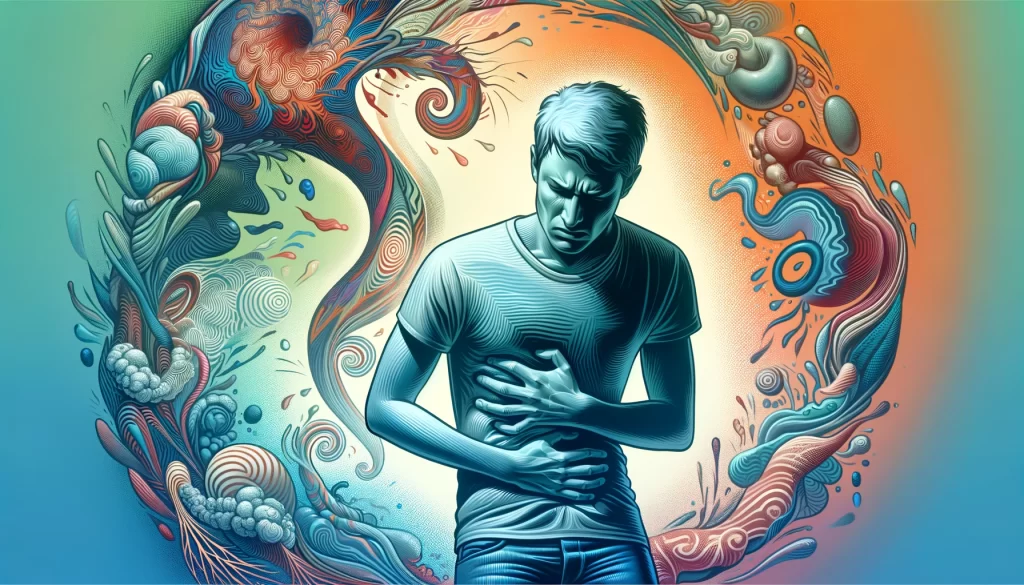
Chronic indigestion, also known as dyspepsia, is a less commonly recognized but equally distressing symptom of anxiety. This condition involves persistent or recurrent pain and discomfort in the upper abdomen, often accompanied by bloating, gas, and nausea. For those dealing with anxiety, the digestive system is particularly vulnerable to the body’s stress response, leading to a variety of gastrointestinal symptoms, including chronic indigestion.
The link between anxiety and digestive health stems from the close communication between the brain and the gut, often referred to as the brain-gut axis. Anxiety can trigger changes in gut motility and secretion, which in turn leads to the symptoms of indigestion. Additionally, the stress response can exacerbate inflammation in the gut, further aggravating these symptoms.
Recognizing chronic indigestion as a manifestation of anxiety is crucial for effective management. Many individuals may not immediately associate their digestive issues with their mental health, leading to treatments that only address the symptoms, not the root cause. Integrative approaches that include stress reduction techniques, dietary adjustments, and, when necessary, therapy can help alleviate both the psychological and physiological aspects of anxiety. Understanding this connection can empower individuals to seek a more holistic approach to their health, addressing both the mind and the body.

Recognizing the signs of anxiety, beyond everyday stress, is crucial for seeking help and improving your quality of life. If you identify with the described symptoms, remember that anxiety is a treatable condition, and numerous resources are available for support. Consulting a healthcare professional can provide personalized guidance and treatment options. For more information and resources on anxiety, visit the [Anxiety and Depression Association of America](https://adaa.org). Understanding and addressing your anxiety is the first step toward recovery and a calmer, healthier life.



